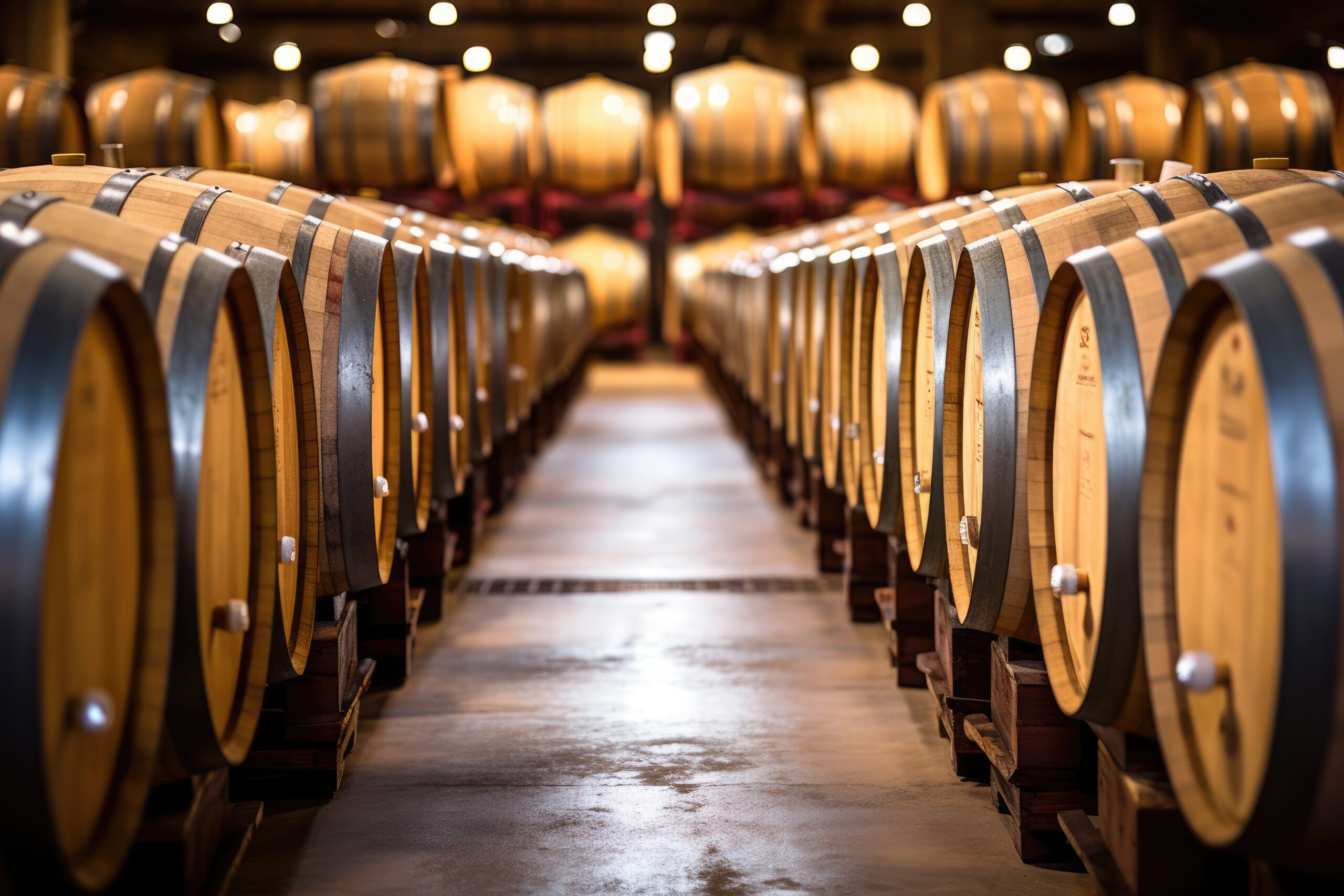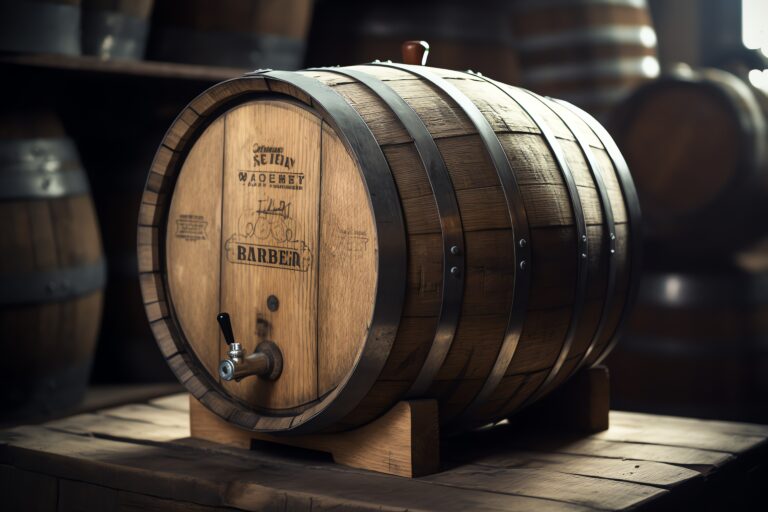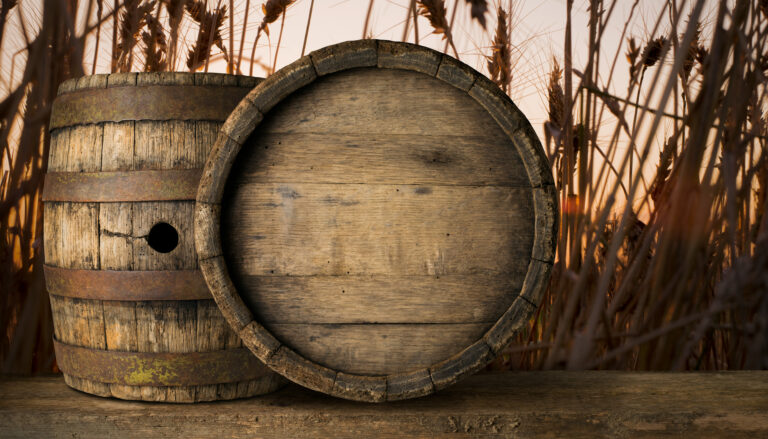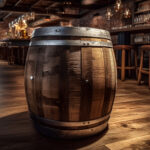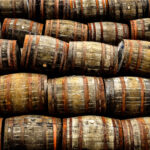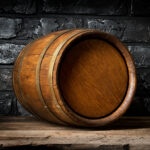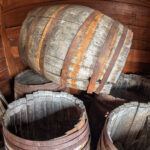Ever wonder why some fine whiskeys boast a smoother, richer character than others? The magic lies in the whiskey aging process. You’ve likely heard the adage that whiskey improves with age, but what’s the real story? As premium whiskey matures in charred oak barrels, it undergoes a remarkable transformation. The spirit slowly extracts barrel flavors and aromas from the wood, softening any initial harshness. Over time, it develops a beautiful amber hue and intricate layers of flavor that simply weren’t present before.
The art and science of whiskey aging is a delicate balance. Master distillers meticulously select the oak barrels for maturation, then patiently wait years, even decades, for the whiskey to mature. Each batch of barrels contributes a unique nuance to the final flavor profile, which is why well-aged whiskeys exhibit such fascinating variety and depth. If you’ve ever savored a truly old, expertly aged whiskey, you understand that the distiller’s patience yields a truly exceptional reward. Thankfully for us, while the distillers are diligently waiting, we get to indulge in the delectable results of their dedication. So, pour yourself a glass of your favorite aged spirit and relish the complex flavors that only time can bestow.
The Importance of Barrel Aging for Whiskey
The whiskey barrel aging process is absolutely fundamental to the development of the smooth, complex flavors that define this beloved spirit. As whiskey rests within charred oak, an incredible interplay occurs between the wood and the liquid.
Firstly, the aging whiskey absorbs both color and a wealth of flavor compounds directly from the wood, such as delightful notes of vanilla and sweet caramel. Naturally, the longer the whiskey ages, the richer its color and the more pronounced these wood-derived flavors become.
Secondly, a portion of the maturing whiskey is lost to evaporation, a phenomenon affectionately known as the “angel’s share.” Intriguingly, this loss in volume leads to a concentration of the remaining flavors and often an increase in the alcohol by volume (ABV), resulting in a bolder and more spirited taste.
Finally, a gentle oxidation process occurs through the porous nature of the oak barrel, gradually mellowing the whiskey and contributing subtle yet delightful fruity and nutty undertones to its profile.
The captivating magic of barrel aging is precisely why premium, aged whiskeys can command higher prices. It’s a painstaking process that simply cannot be rushed. For the finest quality, you’ll generally want to seek out a whiskey that has been aged for a minimum of 4 years. However, as a general rule, with aged whiskey, the older it is, the more character and complexity it often possesses.
So, the next time you take a sip of a beautifully aged whiskey, take a moment to appreciate the years of dedicated care that went into crafting that exceptionally smooth and intricate spirit. The unwavering patience and masterful craft behind it truly elevate it to an art form.
Minimum Aging Requirements for Different Whiskey Types
Whiskey requires time to develop its distinctive character and intricate flavor profiles. The minimum whiskey aging requirements vary depending on the specific type of whiskey being produced.
Bourbon
By law, bourbon whiskey must be aged for a minimum of two years in new, charred American oak barrels. However, many popular bourbon brands are typically aged for 3 to 5 years to achieve a smooth and well-balanced flavor profile, often showcasing delightful notes of sweet vanilla and rich caramel. For a truly premium bourbon with deeper, spicier undertones, you’ll often find expressions aged for 5 to 10 years or even longer.
Tennessee Whiskey
Similar to its close cousin bourbon, Tennessee whiskey also has a minimum barrel aging requirement of two years. Notably, the most famous Tennessee whiskey, Jack Daniel’s, employs barrels that undergo both charring and toasting, which imparts a distinctive smoky nuance that complements the sweet notes derived from the oak.
Rye Whiskey
Spicy rye whiskey is required to be aged for at least two years. The inherently bold and peppery character of rye grain harmonizes beautifully with 3 to 5 years of oak barrel aging. This maturation period often results in enticing aromas of warm cinnamon, fragrant clove, and sweet nutmeg, often with a subtle hint of underlying caramel sweetness.
Scotch Whisky
Scotch whisky has a legal minimum aging period of three years. However, the vast majority of single malt Scotch whiskies are aged for significantly longer periods, typically ranging from 10 to 25 years or even beyond. The extended aging, combined with the cool and relatively stable Scottish climate and the frequent use of previously used barrels, contributes to Scotch’s signature smoky, malty, and often subtly briny flavor profile.
Ultimately, the development of a truly complex whiskey requires both time and patience. However, the specific type of whiskey and, of course, your individual personal taste will ultimately determine what you consider the perfect level of aging. So, take your time to savor and thoroughly enjoy the journey of discovery!
Factors That Influence How Long Whiskey Is Aged
The whiskey aging process is a multifaceted one, but three primary factors play a significant role in determining how long whiskey matures within its barrels:
Barrel Type
The specific type of oak barrel employed, such as whether it is charred oak or uncharred oak, has a profound impact on the aging process. Charred oak barrels, which are mandated for bourbon production, tend to impart more intense flavors and color to the whiskey compared to uncharred barrels.
Barrel Size
The physical dimensions – the size and shape – of the whiskey barrel also matter considerably. Smaller barrels offer a greater surface area-to-liquid ratio, which generally leads to faster aging as more of the whiskey comes into contact with the wood. Conversely, larger barrels result in slower aging but can often yield a smoother and more integrated flavor profile over a longer period. Many distilleries strategically utilize a combination of different barrel sizes to achieve their desired results.
Environmental Conditions
The surrounding environmental conditions, particularly temperature and humidity levels within the whiskey warehouse, exert a significant influence on the rate of aging. Warmer temperatures and higher humidity tend to accelerate the aging process, as they encourage more interaction between the whiskey and the oak. Conversely, cooler conditions slow down the maturation. Savvy distillers can strategically manage the aging process by carefully positioning barrels in different areas of the warehouse, taking advantage of these varying environmental conditions.
Beyond these key factors, other elements such as barrel rotation within the warehouse, the initial barrel entry proof (the alcohol content of the new-make spirit entering the barrel), and whether the barrel has been previously used also contribute to the overall duration required to achieve the desired levels of smoothness and complexity in the final whiskey. Experienced master distillers continuously sample and meticulously monitor the aging barrels, relying on their expertise to determine precisely when the whiskey has reached its peak flavor potential.
How Wood Type Impacts Whiskey Aging and Flavor
The specific type of wood used in crafting whiskey barrels exerts a profound influence on how the whiskey ages and the unique flavors it develops. American oak barrels, most commonly fashioned from charred white oak, are the standard for aging bourbon. This particular type of oak wood contributes characteristic notes of sweet vanilla and rich caramel, along with the development of the whiskey’s signature amber color.
European oak barrels, frequently employed in the maturation of Scotch whisky, tend to impart more resinous and spicier flavor nuances to the spirit. Furthermore, the use of Sherry casks, which previously held fortified Sherry wine, introduces delightful dried fruit flavors such as raisins and prunes to the aging whiskey. Similarly, Port casks, having previously contained Port wine, contribute subtle hints of ripe berries.
The level of char or toast applied to the inside of the oak barrel, a process involving controlled burning, also significantly affects the resulting flavor profile. Heavier charring tends to produce more pronounced smoky notes in the whiskey, while lighter toasting enhances the inherent oak flavors without introducing bitterness. Even the specific location where the oak trees were grown and the precise composition of the wood itself can subtly impact the aromatic compounds that are absorbed into the whiskey during aging.
The environmental conditions within the whiskey warehouse, particularly variations in temperature, cause the whiskey to expand into and contract out of the oak wood, facilitating the extraction of flavor and color compounds. More extreme temperature fluctuations generally lead to quicker aging, while more stable temperatures tend to produce a mellower and smoother spirit over a longer period.
Ultimately, the type of wood used for the barrel, the level of char or toast applied, and the prevailing warehouse conditions all work in concert to create a harmonious and well-balanced whiskey during the aging process. Even subtle differences in these critical factors can lead to the distinct and recognizable characteristics of various whiskey styles.
Typical Whiskey Aging Timelines by Style
The typical whiskey aging timeline varies considerably depending on the specific style of whiskey being produced.
Bourbon typically undergoes an aging period of between 4 to 12 years. By legal definition, bourbon must be aged in new, charred oak barrels. This charring process significantly accelerates the extraction of flavors from the wood, allowing for substantial flavor development within a relatively shorter timeframe.
Single malt Scotch often enjoys a much longer maturation period, typically aging for at least 10 to 15 years, and frequently extending to 20 years or even longer for premium expressions. The cooler Scottish climate contributes to a slower and more gradual aging process. Additionally, the more delicate malted barley spirit often benefits from this extended maturation to develop its full complexity.
Irish whiskey tends to have an aging range similar to Scotch, typically between 10 to 15 years. Like Scotland, the cooler Irish climate necessitates a longer aging period. However, Irish whiskey generally exhibits a lighter and smoother profile compared to many single malts, so it may not always require quite as lengthy a maturation.
Rye whiskey typically ages for a shorter duration, generally ranging from 2 to 10 years. The inherently spicy and robust flavor of rye grain benefits from aging in oak, but it doesn’t necessarily require as long a maturation period as malted barleys to achieve a well-developed character. Many craft distilleries are producing excellent younger rye whiskeys that are packed with flavor.
Ultimately, the determination of the optimal aging time for any given whiskey comes down to the distiller’s artistic judgment and their personal taste preferences. While established guidelines exist for each category, a whiskey is generally considered mature when it has developed a compelling array of complex flavors and the spirit has achieved the desired level of smoothness and balance. While patience is undoubtedly a virtue in whiskey production, excessively long aging can sometimes lead to the oak flavors overpowering the more delicate and distinctive notes of the underlying grains.
When Longer Aging Isn’t Necessarily Better
Once a whiskey has reached a certain stage of maturity, the advantages of further aging can begin to diminish. While older whiskeys are often perceived as more premium and valuable, there comes a point where the influence of the oak barrel can start to overshadow the inherent flavors of the whiskey itself.
For the majority of whiskeys, aging beyond a period of 15 to 20 years often yields limited additional flavor improvements. By this stage, the barrel wood and the charcoal have typically released most of their readily available flavor compounds, and the whiskey is no longer absorbing significant new flavors. Continuing to age the whiskey beyond this point primarily results in increased evaporation, leading to a loss of volume without a corresponding gain in flavor complexity.
An exception to this general rule can be found in whiskeys that are aged in used barrels. In these cases, the more subtle flavors from the wood can continue to gently infuse into the whiskey over many more years. However, for whiskeys aged in new, charred oak barrels, the optimal “sweet spot” for achieving maximum flavor complexity and balance is generally considered to be within the range of 10 to 20 years.
Of course, the ideal aging period ultimately remains a matter of personal taste. Some whiskey drinkers deeply appreciate the bold and intense flavors that can develop from longer aging, while others prefer younger whiskeys that allow the more delicate grain and malt flavors to shine through more prominently. As with many aspects of life, moderation often proves to be key – for the most nuanced and well-rounded flavor experience in your whiskey, seeking out a well-balanced middle-aged expression is often the most rewarding approach.
Special Long-Aged Whiskeys Worth Hunting For
Once whiskey has gracefully aged for a minimum of 4 years within the embrace of charred oak barrels, it typically develops a smooth and mellow character that only deepens and enriches over time. However, there exist certain extra-aged whiskeys that transcend the ordinary, becoming truly exceptional and highly sought after. Here are a few remarkable examples that are well worth the effort to find:
Pappy Van Winkle: This legendary bourbon has achieved cult status among enthusiasts. Offered in expressions aged 15 to 23 years, it boasts an incredibly smooth and complex profile with captivating notes of sweet vanilla, rich caramel, and warm spice. Should you be fortunate enough to encounter a bottle, be prepared for a significant investment, as its rarity commands a premium price.
The Balvenie 50-Year-Old: As its name proudly proclaims, this exceptional single malt Scotch spends an astounding 50 years maturing in ex-Sherry casks. The result is a remarkably complex yet beautifully balanced dram, showcasing enticing flavors of dried fruits, seasoned oak, and subtle leather. With only 88 bottles ever released, tracking one down may necessitate a visit to a fine spirits auction house.
Glenlivet 70-Year-Old: In 2022, The Glenlivet unveiled a truly extraordinary and incredibly limited release of just 100 bottles of this rare 70-year-old single malt Scotch. Matured in a carefully selected combination of both European and American oak casks, it is said to offer a symphony of rich notes including honeyed sweetness, bright citrus, and warm spice, culminating in a remarkably long and lingering finish. Priced at $150,000 per bottle, this is undeniably a once-in-a-lifetime sipping experience.
Michter’s Celebration Sour Mash: Released periodically in extremely limited quantities, this highly acclaimed whiskey is a masterful blend of bourbons ranging in age from 20 to 30 years, offering a veritable taste of history within a single glass. Delightful notes of sweet caramel, creamy vanilla, and candied fruit dance on the palate, leading to a warm and exceptionally smooth finish that seems to last indefinitely. If you happen to stumble upon a bottle, be prepared for a four-figure price tag, but discerning reviews consistently suggest it is an investment truly worth making.
For most whiskey enthusiasts, the prospect of finding one of these elusive and profoundly long-aged bottles may remain a cherished dream. However, their existence serves as a powerful reminder of the incredible magic that can emerge from oak barrels given sufficient time and unwavering patience. The good news is that exceptional aged whiskeys, while often rare, provide invaluable inspiration for distillers and blenders to continually innovate and refine their craft, ultimately enriching the world of whiskey for all to enjoy.
How to Read Whiskey Age Statements on Labels
To determine how long a particular whiskey has been aged, simply check the whiskey label for an age statement. According to U.S. law, any age declared on the label must reflect the age of the youngest whiskey included in the bottle.
Look for a numerical value followed by the words ‘years old’ or ‘aged’. This clearly indicates the precise minimum age of the whiskey. For instance, an indication of ’10 years old’ signifies that every drop of whiskey in that bottle has been aged in barrels for a minimum of 10 years.
The designation ‘Bottled-in-Bond’ signifies that the whiskey has been aged in barrels for at least 4 years. This term has historical significance, dating back to the Bottled-in-Bond Act of 1897, which was established to guarantee the quality and authenticity of American whiskey.
Be aware that brand names or terms like ‘Old No. 7’ or ‘Old Crow’ are simply brand identifiers related to a specific recipe and do not provide any information about the whiskey’s age. Do not mistakenly assume that a name containing the word ‘old’ necessarily implies extra aging.
The stated age of a ‘small batch’ or ‘single barrel’ whiskey can vary. Always look for a specific numerical age statement to know the exact minimum age. The terms ‘small batch’ and ‘single barrel’ primarily refer to the production method and are intended to highlight the unique flavor characteristics derived from a limited number of barrels or even a single barrel, not necessarily extended aging.
For blended whiskeys that incorporate spirits of varying ages, the label will always state the age of the youngest whiskey used in the blend. For example, a blend comprising 4-year-old and 8-year-old whiskey would be labeled as 4 years old.
Ultimately, it’s important to remember that age is not the sole determinant of quality in whiskey. While longer aging often contributes to greater flavor complexity, a truly exceptional whiskey is the result of a harmonious combination of factors, including the recipe, the quality of the barrels used, the climate in which it was aged, and the skill and expertise of the distiller. However, when you’re seeking a reliable indicator of potential depth and character, you generally can’t go wrong by opting for an older, well-aged dram!
The Best Ways to Taste How Age Transforms Whiskey
The most insightful way to truly appreciate the profound impact of age on whiskey is through the act of mindful tasting. Here are some valuable tips to help you directly experience the transformative effects of barrel aging:
Compare young and old: Select two whiskeys from the same distillery, one being a younger expression and the other a significantly older, more aged version. By tasting them side by side, you’ll likely observe that the older whiskey exhibits a smoother, mellower character and a greater degree of overall complexity. The more assertive and sometimes less refined qualities often found in younger spirits tend to soften and integrate beautifully with time.
Look for color changes: As whiskey ages within the charred oak barrel, it undergoes a noticeable darkening in color, evolving from a lighter golden hue to a richer, deeper amber or even a reddish tint. This color change is a direct result of the whiskey extracting compounds from the charred wood. Generally, the longer the whiskey has been aged, the darker and more intense its color will become.
Smell the oak influence: The oak barrel plays a crucial role in imbuing the whiskey with distinctive vanilla and spice notes over time. Take a moment to deeply inhale the aromas of a well-aged whiskey. You’ll likely detect enticing scents of sweet vanilla, warm cinnamon, fragrant nutmeg, and the subtle aroma of toasted wood.
Notice the enhanced smoothness: One of the hallmark characteristics of aged whiskey is its remarkably silkier and smoother mouthfeel compared to its younger counterparts. The barrel aging process works to mellow the whiskey, rounding off any rough or sharp edges that might be present in its youth. Sipping a well-aged whiskey can often feel almost velvety on the palate.
Taste for layered complexity: An aged whiskey develops intricate layers of flavor derived from its interaction with the wood over many years. Beyond the initial grain and distillation character, you might discover nuanced notes of rich maple syrup, dried fruits, toasted nuts, or even dark chocolate. These multiple flavor dimensions emerge and intermingle harmoniously with the foundational oak and spice notes, creating a truly satisfying and multifaceted sipping experience.
Finish with lingering warmth: Aged whiskeys often leave behind a long and pleasantly lingering finish, filled with a comforting warmth. The compounds extracted from the barrel contribute to this extended afterglow, which can persist for several minutes after each sip.
The transformative effects of barrel aging are truly captivating. Tasting aged whiskey side by side with a younger expression from the same distillery provides the most direct and compelling way to fully appreciate how time in oak enhances the spirit’s aroma, flavor, mouthfeel, and overall finish. Whiskey undergoes a remarkable and beautiful evolution during its long years of maturation within the barrel.
Final Thoughts
So, there you have it – a concise overview of how whiskey achieves its signature smoothness and complexity through the vital process of aging. The next time you find yourself savoring a well-aged single malt Scotch or a fine Kentucky bourbon, take a moment to appreciate the years of unwavering patience and dedicated care that went into meticulously crafting your drink. While aging whiskey for an extended period doesn’t automatically guarantee a superior spirit, as is often the case in life, truly good things often come to those who wait. And when you discover a whiskey that perfectly suits your palate, take your time to fully enjoy it. Savor each individual flavor note, inhale the captivating aromas, and allow each sensation to awaken your senses. Much like a distinguished fine wine, well-aged whiskey is intended to be appreciated with mindful attention. So, reach for your favorite whiskey glass, find a comfortable and inviting spot to unwind, and raise a heartfelt toast to the dedicated cooperages and distilleries that diligently keep the time-honored tradition of barrel aging vibrantly alive.
